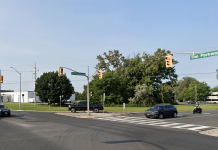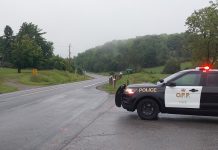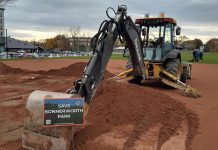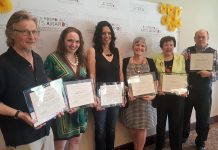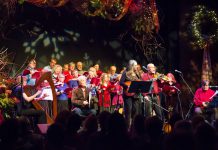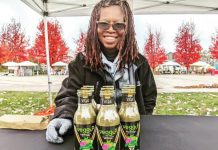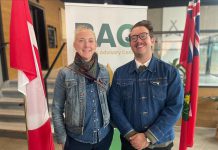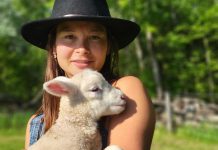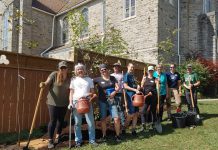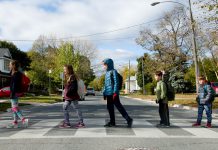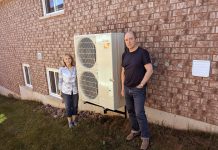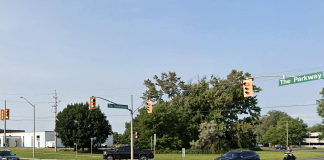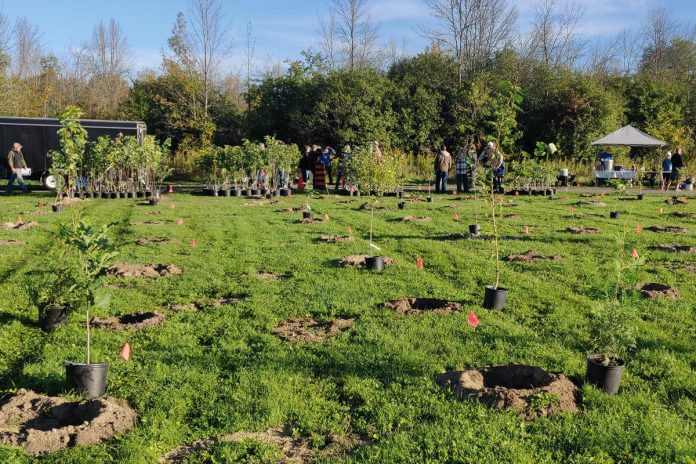
As the adage goes, the best time to plant a tree was 20 years ago, the second-best time is now. Let’s dig in, Peterborough!
The City of Peterborough has committed to have at least a 35 per cent urban tree canopy by 2051 to meet climate targets. Urban tree canopy is the layer of trees, leaves, branches, and stems covering public and private lands, and includes woodlands, trees along streets, in parks, cemeteries, and in backyards.
According to Nicky Partridge, urban forest technologist with the City of Peterborough, “establishing a canopy cover goal in the official plan and urban forest strategic plan helps recognize the importance of the urban forest and the benefits it provides to our community. Setting a tree canopy goal helps prioritize policies and practices related to urban forest management and community stewardship, which will then better support the protection and enhancement of the urban forest.”
In short, the 35 per cent target will ensure the long-term protection, maintenance and enhancement of the urban forest.
“With approximately 80 per cent of the city’s urban forest being located on private property, it is important that existing trees are maintained and that we increase tree planting efforts across the community,” Partridge says.
To help Peterborough meet this target, our community will need to look at new opportunities on private land to help achieve 35 per cent canopy cover in Peterborough.
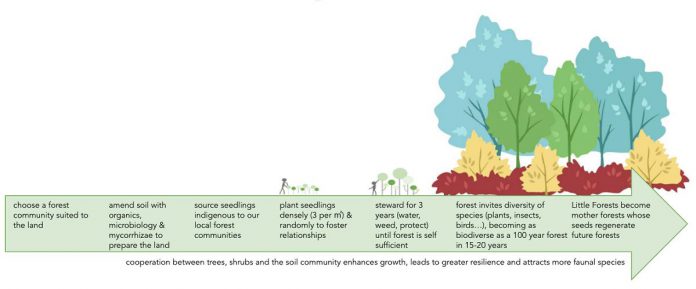
Enter ‘little forests’. The concept is simple: like humans, trees live in communities. Trees will thrive when planted alongside complementary species, in healthy soil teeming with life.
Guided by an afforestation method developed by botanist Akira Miyawaki, GreenUP is introducing a project to create little forest ecosystems on private properties. Planting with the Miyawaki method accelerates tree growth compared to leaving deforested land untouched. Little trees that are planted will become a mature forest habitat in 15 to 20 years.
The method speeds up restoration efforts by including species that would naturally exist in the landscape without human impact. Placed in close proximity to one another, the trees interact with different plant layers and each other to support growth.
To grow a little forest in Peterborough-Nogojiwanong, the first step is to select a mix of canopy, subcanopy, understory, and ground cover trees and plants from a list of species indigenous to the Lake Simcoe Rideau Ecoregion.
Then, prepare the soil and plant the trees and plants densely (three plants per square metre). Next, cover the ground with mulch to protect the soil and roots.
Trees will require tending by us through the first few years but will soon grow to support each other after that. They will become a thriving forest ecosystem, even in our urban environment.
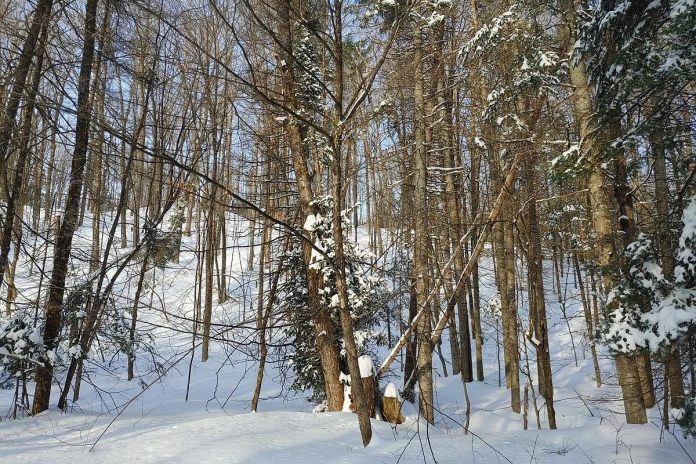
These little forests will give back to our community many times over by increasing biodiversity, producing breathable air, enriching resilient soil, and supporting carbon capture.
“Trees provide many environmental, economic, cultural, and societal benefits such as improving air quality by absorbing carbon, mitigate flooding by intercepting storm water, reducing energy use requirements and costs, as well as promoting physical and psychological health and well-being,” Partridge explains.
“It is critical to recognize and manage the urban forest as a key element of the city’s green infrastructure,” she adds. “Employing new strategies to plant more trees on private property is key to moving forward.”
Little forests are popping up in cities all over Canada. Within Ontario, Little Forests Kingston is working to bring a 3-30-300 tree equity to Kingston — every child can see three trees from their window, live in a neighbourhood with at least 30 per cent canopy, and live within 300 metres of a greenspace — all while inviting the community to participate in planting projects.
In a recent article by Canadian Geographic, Guelph-based landscape architect and ecologist Heather Schibli outlines how she centres her life around little forests by tending to her little backyard forest, while working to develop a virtual platform showcasing appropriate areas where little forests can be planted.
With all this inspiration, GreenUP is enthusiastic to start a little forest project here in Peterborough. We are looking for community champions that will help us make this project, and our city’s climate goals, a reality.
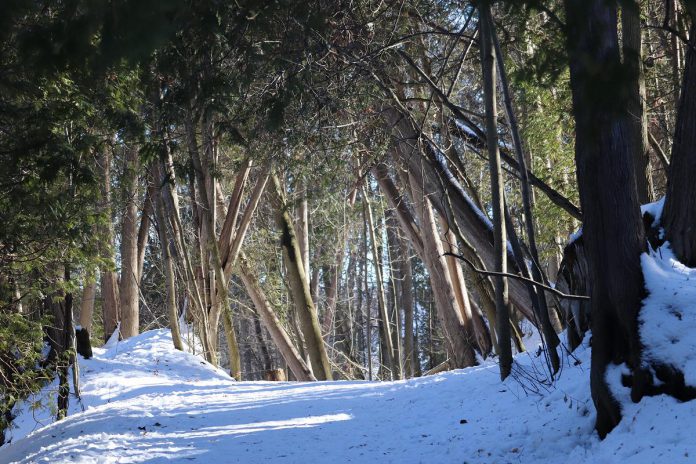
GreenUP’s goal is to plant 360 trees to make three of the first little forests in Peterborough, each the size of three parking spaces (roughly 40 square metres each). To be successful, the project will require $5,000 in donations by the end of May.
Allowing the urban tree canopy to flourish requires community support. A little community effort and investment now can allow projects like these to grow and sustain themselves for many years to come.
If you are interested in learning more about how to get involved with local little forests initiatives, email laura.keresztesi@greenup.on.ca or visit our Little Forests page on CanadaHelps where you can also make a donation.
This story has been updated with a correction about the size of the three ‘little forests’ GreenUP is aiming to plant.


